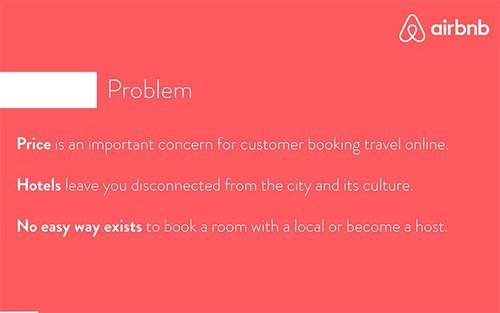How to present your work with effective pitch deck design
by Shweta Bisht - April 03, 2024
Imagine walking into a room full of people who could change your life. You’ve got just a few minutes to convince them that your idea is worth their time, trust, and money. No pressure, right?
But here’s the thing—most pitches don’t fail because the idea isn’t good. They fail because the story isn’t clear, the slides are dull, and the audience tunes out before you even get to the good part.
Your pitch deck isn’t just a bunch of slides; it’s your chance to make them care. So, how do you create one that keeps people hooked, gets them nodding, and (hopefully) leads to a "Let’s talk next steps"?
Let’s break it down.
1. Clarity over clutter – The ‘Billboard rule’
Think of your slides as billboards on a highway. If someone can’t grasp the main message in three to five seconds, it’s too cluttered. Avoid overwhelming your audience with text-heavy slides—focus on key takeaways, and let your voice do the storytelling.
Tip: Use the 6x6 rule—no more than six words per bullet and six bullet points per slide.
Example: Airbnb’s famous early pitch deck (which helped secure $600K in seed funding) had just a few words per slide, supported by clean visuals. No fluff, just impact.
2. Structure like a story – The ‘Hero’s journey’
A great pitch deck follows a narrative arc:
1. Vision and Value Proposition
Capture your entire business in one powerful sentence. The ultimate elevator pitch.
2. The Problem: Crafting a Compelling Narrative
Start with a problem that resonates deeply.
Key Elements:
Specific problem definition
Who experiences this problem
Current market inadequacies
Take Ola Cabs' approach—Bhavish Aggarwal identified the chaos of urban transportation and the difficulties of booking reliable rides in Indian cities.
3. The Solution: Your Product as the Game-Changer
Introduce your offering like a hero solving a critical challenge.
Storytelling Approach:
Build tension around the problem
Introduce solution dramatically
Use visuals and compelling narratives
Focus on customer transformation
Similar to how PharmEasy transformed pharmaceutical access during the pandemic, show how your solution addresses a significant market need.
4. Market Opportunity: Timing and Potential
Demonstrate the market's potential. Learn from Nykaa's strategy—Falguni Nayar showed how a specialized e-commerce platform could disrupt the beauty and personal care market in India.
5. Traction: Showcase Your Early Wins
If you've got numbers, flaunt them—early customers, revenue, partnerships. Learn from Zerodha's approach, where Nithin Kamath transparently shared growth metrics that made investors sit up and take notice.
6. Business Model: How You'll Monetize
Explain your revenue streams. Take a page from Byju's playbook—they didn't just sell an education app, they created an entire learning ecosystem that investors found irresistible.
7. Team: Your Startup's Core Strength
Highlight key people and their unique capabilities. In Asian startup culture, team credibility is paramount. Show why your team is uniquely positioned to solve the problem.
8. Financials
Keep projections realistic and visual.
Present:
Sales forecasts
Customer growth trajectories
Expense management
Realistic financial modeling
9. Competition
Articulate your competitive advantage.
Demonstrate:
Unique value proposition
"Secret sauce"
Why customers will choose you
10. Investment and Funding
The critical ask.
Clearly outline:
Exact funding requirement
Detailed fund utilization
Potential investor value
Clear growth vision
End with a clear, confident request—funding, partnerships, or strategic support.
Example: Razorpay's pitch deck tells a compelling story of solving payment challenges for Indian businesses, demonstrating how local context can make a global impact.
3. Design for impact – The ‘Netflix thumbnail’ effect
Just like a Netflix thumbnail makes you decide whether to click, the design of your deck determines whether your audience stays engaged.
Use consistent branding: Stick to your brand colours and fonts.
Leverage visuals: Replace paragraphs with charts, graphs, and icons.
Whitespace is your friend: Don’t fear empty spaces—they help highlight key points.
📊 Fact: According to a Microsoft study, the average human attention span is just 8 seconds—shorter than a goldfish’s. If your slides are visually overwhelming, your audience will check out.
4. Show, don’t just tell – The ‘Shark Tank’ effect
Numbers and testimonials are powerful, but live demos or product visuals can be game-changers. Investors on Shark Tank and Dragon’s Den get excited when they see products in action.
Example: Steve Jobs didn’t just tell us about the iPhone in 2007—he showed us, scrolling through music and making a call on stage. If you’re pitching an app, show a live demo. If you have customer testimonials, include a video clip.
5. Keep the momentum – The ‘TED Talk’ energy
A pitch isn’t just slides—it’s performance. You could have the best-designed deck in the world, but if you sound robotic, your audience will tune out.
Vary your voice tone to emphasise key points.
Pause for effect—silence can be powerful.
Engage with eye contact instead of reading slides word-for-word.
Fact: The most popular TED Talks maintain an average of 165 words per minute—fast enough to keep energy high, but slow enough for clarity.
6. AI & Tools to supercharge your pitch deck
AI is revolutionising how we design and refine pitch decks. Here are some powerful tools to elevate yours:
Beautiful.ai – AI-driven slide design that automatically adjusts layouts for maximum impact.
Tome – AI-powered storytelling tool for pitch decks with dynamic visuals and embedded content.
ChatGPT – Generate concise, persuasive text for your slides.
Canva – User-friendly templates with drag-and-drop design elements.
Gamma.app – Turns bullet points into stunning pitch decks using AI automation.
Tip: Use AI as an assistant, not a replacement. Your deck should still have a human touch!
7. End strong – The ‘Mic Drop’ moment
People often remember the last thing you say. End with a bang:
A bold statement: “This is the future of [industry].”
A powerful stat: “We’ve already grown 300% this year.”
A clear ask: “We’re looking for £500K to take this global.”
Your final slide should be memorable and action-oriented.
Need a winning Pitch Deck? We’ve got you covered.
At Comms Ninja, we’ve helped organisations craft pitch decks that win funding, close deals, and leave lasting impressions. Whether you need strategy, storytelling, or sleek design, we make your deck investment-worthy.
Final Thoughts
A pitch deck isn’t just about slides—it’s a strategic storytelling tool. Keep it clear, visually appealing, and structured like a gripping narrative. Whether you’re pitching to investors, clients, or partners, a well-crafted deck can make all the difference between “interesting idea” and “where do I sign?”
Keep it clear. Make it visual. Tell a great story. And deliver it with confidence.
And if you need an expert touch, Comms Ninja can help you craft a pitch deck that actually works.





